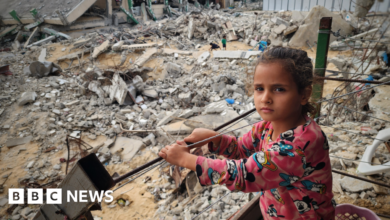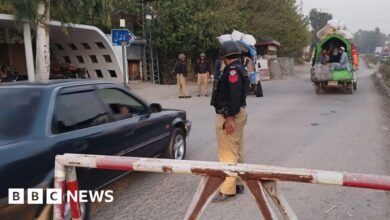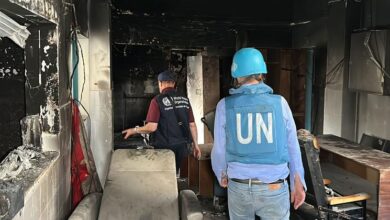Amputees in Gaza are provided with easy-to-install prosthetic limbs using British technology
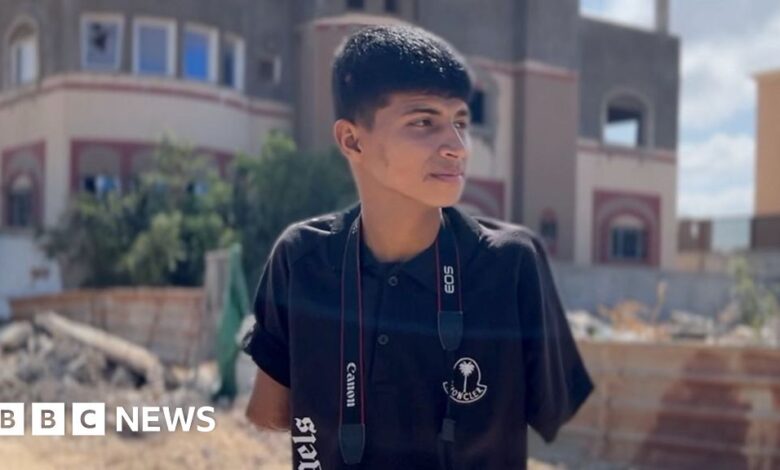
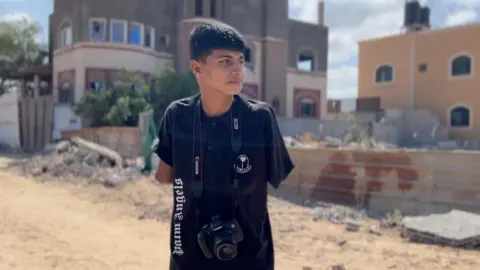 BBC
BBCStanding between two barriers erected at a mobile clinic in Rafah, southern Gaza, Rizeq Tafish concentrates as he takes his first hesitant steps in four months.
“My feelings before were sadness and despair. Now I feel happy and free,” he said, grinning afterward.
Rizeq is one of the first thousands of injured Palestinians who will receive new prosthetic limbs from Jordanian doctors using cutting-edge British technology.
Warning: This report contains graphic details of injuries
Relocated to Rafah, he was injured by Israeli tank fire while leaving Friday prayers in June. Having lost his leg, the blacksmith could no longer work and felt hopeless.
“I lost my whole life: my job and my hope,” Rizeq said. “There is no one to take care of my wife and children. I even needed help to use the restroom.”
The human cost of Israel’s brutal year-long war in Gaza is measured not only in the number of people killed but also in the number of lives changed forever.
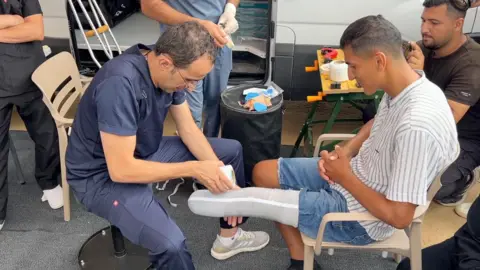
After analyzing emergency medical data, the United Nations World Health Organization (WHO) estimated at least 94,000 people were injured. More than 24,000 people – one in every 100 Gazans – suffered life-changing injuries. These include severe burns, head and spine injuries and amputations.
At the same time, leaving Gaza for medical treatment is virtually impossible, and only 16 of 36 hospitals remain operational. Rehabilitation services were severely disrupted. The WHO said only 12% of equipment needed for injured people – such as wheelchairs and crutches – was available.
Jordan’s program uses innovative prosthetics from two British companies, Koalaa and Amparo. They feature easy-to-fit sockets and a new direct molding technique for the lower limbs, helping to avoid months of waiting and multiple fittings.
“This is a new type of prosthetic limb. Its main feature is fast production. That means it will be ready for the patient in just one to two hours,” explains Jordanian military doctor Lieutenant Abdullah Hamada, who skillfully fitted Rizeq’s replacement leg.
His medical team has helped dozens of amputees. Each prosthetic limb costs around $1,400 (£1,100), with funding from the Jordanian state and a national charity.
Each accessory is digitally registered allowing for remote monitoring and tracking procedures.
If it’s safe enough, the plan is for Jordan’s two mobile units to move around. There is a huge need for prosthetics across Gaza among all ages.
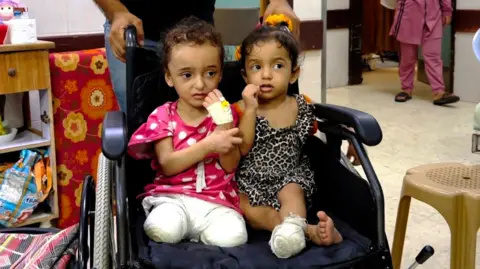
At al-Aqsa Martyrs Hospital in central Gaza, sisters Hanan and Misk al-Doubri are so small they have to sit in a wheelchair. Last month, they lost their mother and two legs in an Israeli air strike on their home in Deir al-Balah.
Misk, 18 months old, just learned to walk. Now she struggles to stand on her one good leg. But three-year-old Hanan was injured much more severely; she was blown out of her family’s first-floor apartment.
“We tried to distract her, but she always came back asking about her mother,” Sheifa said. “Then she asked, ‘Where is my foot?’ I don’t know what to say to her.”
I asked the Israeli military why al-Doubris was targeted but received no response.
Locals believe the girls’ father, a policeman, who remains in intensive care, may have been targeted. Israel has attacked many people working for security forces in Hamas-run Gaza.
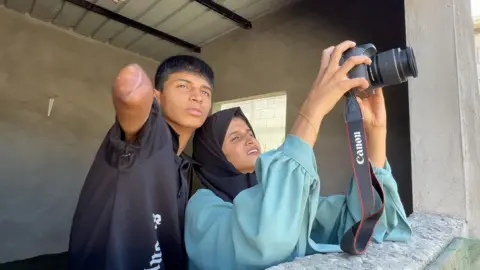
With Israeli drones flying overhead, 15-year-old Diya al-Adini surveys the destruction of his home in Deir al-Balah. Around his neck he always wears a precious possession he bought with money saved for months: a digital camera.
However, he can no longer use it without help: he has no hands.
In August, Diya was playing a computer game in a cafe when Israel bombed it.
“The speed of the missile made it difficult for me to react. After being hit, I lost consciousness for a few seconds,” Diya recalled. “When I arrived, everything was white. It felt like I was watching a movie. I tried to stand up but couldn’t move; I have no hands to help me.”
Diya used to enjoy swimming and walking his dog, he did chores on his bicycle and took landscape photos. Now he has to rely on his sister Aya to take pictures for him. But he was determined to be positive.
“I am trying to plan a good future so that after getting prosthetic limbs, I can work hard and excel to become a famous photographer,” he said. “I need my limbs back to photography and everything I love.”
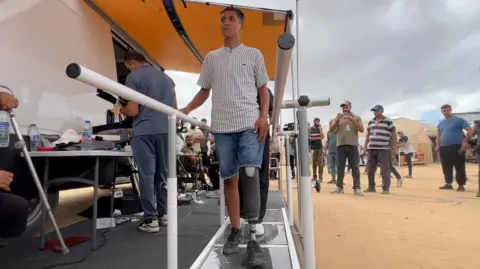
Traveling the bumpy road to the tent camp he now calls home, Rizeq Tafish was given a crutch to help him adjust to his new prosthetic leg.
“I want to forget the time I had no legs and start again. I still consider myself whole and complete,” he told a local journalist working for the BBC in Gaza.
“I can go back to my job or get another job when I have a new limb. Just getting my leg back will give me back the smile I want to share with everyone.”
But there were tears of joy as well as smiles when he arrived at his family’s home. Rizeq’s mother was overcome as he stepped forward without help to embrace her and his wife praised God as he stood holding their young son.
Rizeq is just one of many people in Gaza who are learning to cope with a serious new disability, but he’s taken a step toward getting his life back.


